When you look at a mountain, or a valley, do you wonder how it got there?
When you look at a map of the world, have you ever noticed how the continents look as though they could almost fit together like a puzzle?
Earth is very old – over 4.5 billion years old. And the land on our planet is constantly moving and changing. It’s happening right NOW!
It’s weird to think about, right? I mean, we know about the water cycle, so we know water on Earth is moving and changing. And we know about wind and changing weather, so we know there’s lots going on in the atmosphere. Plants and animals are growing and moving. That’s no surprise. But sometimes we don’t think about how the very ground beneath us is also moving and changing.
Being the good scientific thinkers you are, I know you’re saying, “WHAT?!? That sounds a little CRAZY! What’s your EVIDENCE?” So, recently I traveled to the country of Iceland to gather some photographic evidence for you.

Ms. Christie-Blick climbing mountains in Iceland. They are all volcanoes in this picture. These have been dormant a long time. The “ground” you see is volcanic ash.
Iceland has many mountains because it sits between two continental plates. Since it is right at the edge of two plates, the ground here moves A LOT. This movement causes friction, which creates heat, melting rock underground.
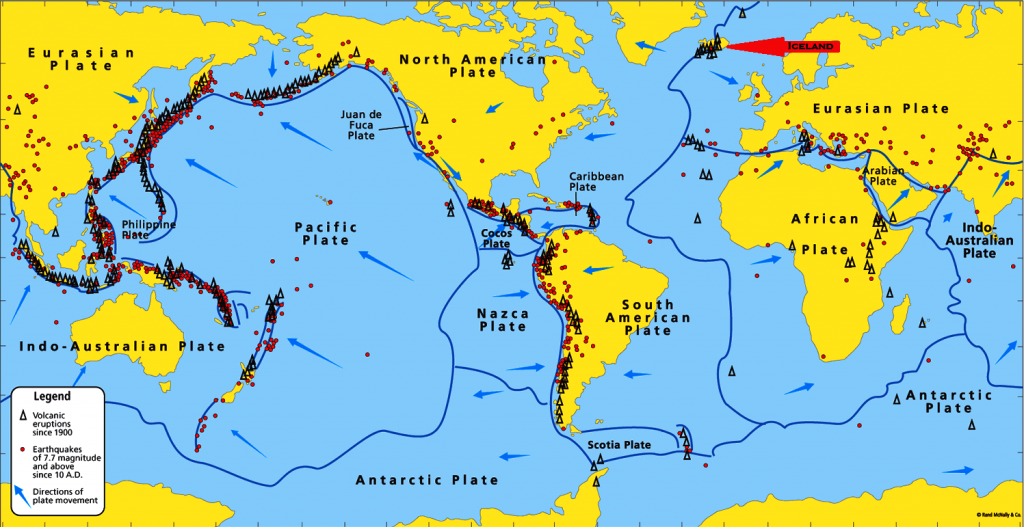
Can you find the country of Iceland? Part of the country is on the North American Plate, and part of it is on the Eurasian Plate. It’s on the boundary of both plates.
The underground natural heating creates some weird and wonderful phenomenon around Iceland, like mud pots….
and geysers.
The liquid rock under Iceland, called magma, sometimes breaks through the surface of the earth. We call this a volcano.
When it erupts, the liquid rock from under the earth pours onto the top of the earth and creates more land. As the lava cools, it mounds up higher and higher and can become a very tall mountain, or it can spread out.
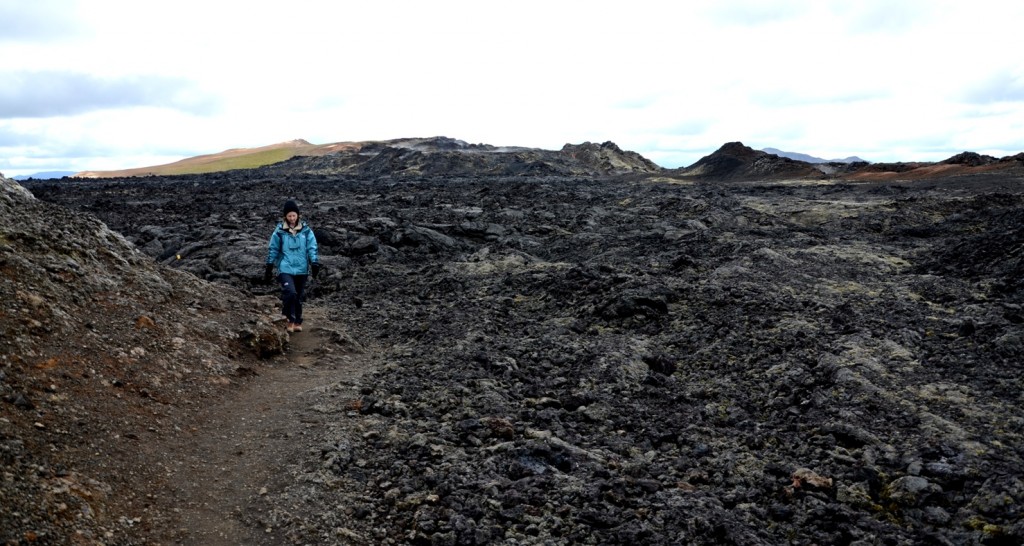
Ms. Christie-Blick walks across cooled lava, which has spread across the land for many miles in all directions.
I saw many different types of volcanic landscapes in Iceland – beautiful and fascinating! In some areas, the land was still very hot. I had to watch out where I stepped.
Other areas had cool ground but their tumultuous history left behind magnificent scenery.
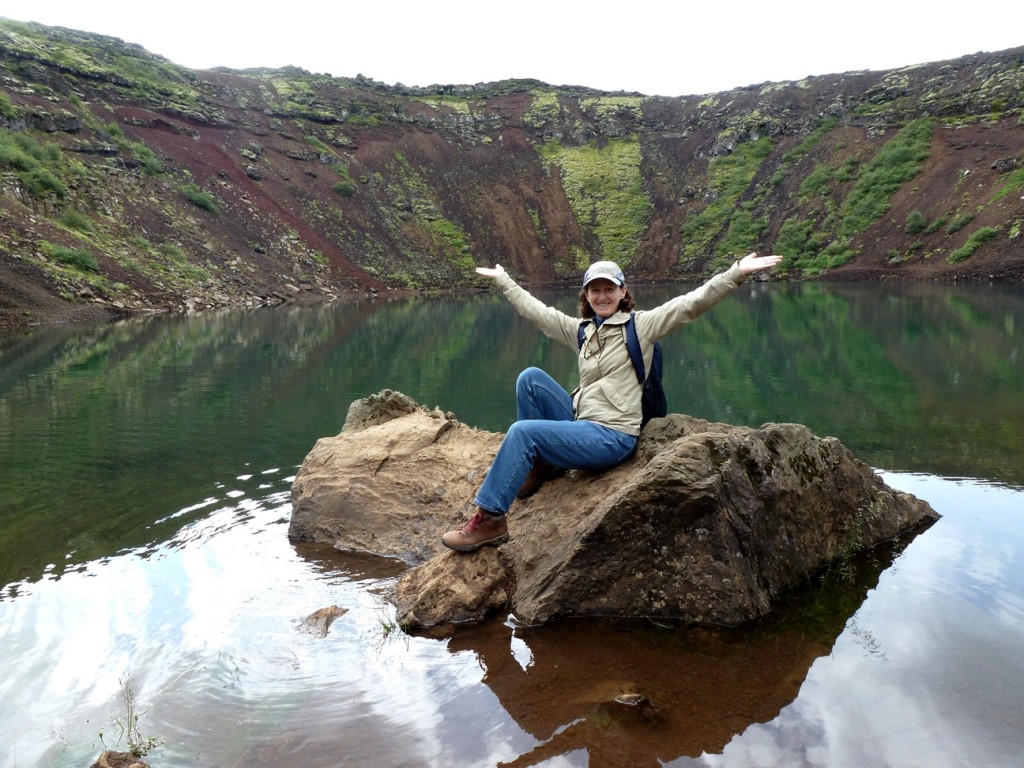
Ms. Christie-Blick inside the caldera of a volcano. It’s been dormant for a long time, and has filled up with rain water. (Chirpy is in the backpack.)

Lava poured out of a volcano and hardened into rock. Years later, an earthquake cracked it open. It filled with rain water and melted snow. Now people throw in coins and make a wish while picnicking at this beautiful spot!
Seismologists, scientists who study earthquakes, know that there’s usually some movement of the earth before a volcano erupts. Engineers have built monitors to detect the earth’s movement. Engineers and scientists work together to increase our understanding of the geosphere. Warning systems are in place to tell people when a volcano is about to erupt so they can move away from the area.
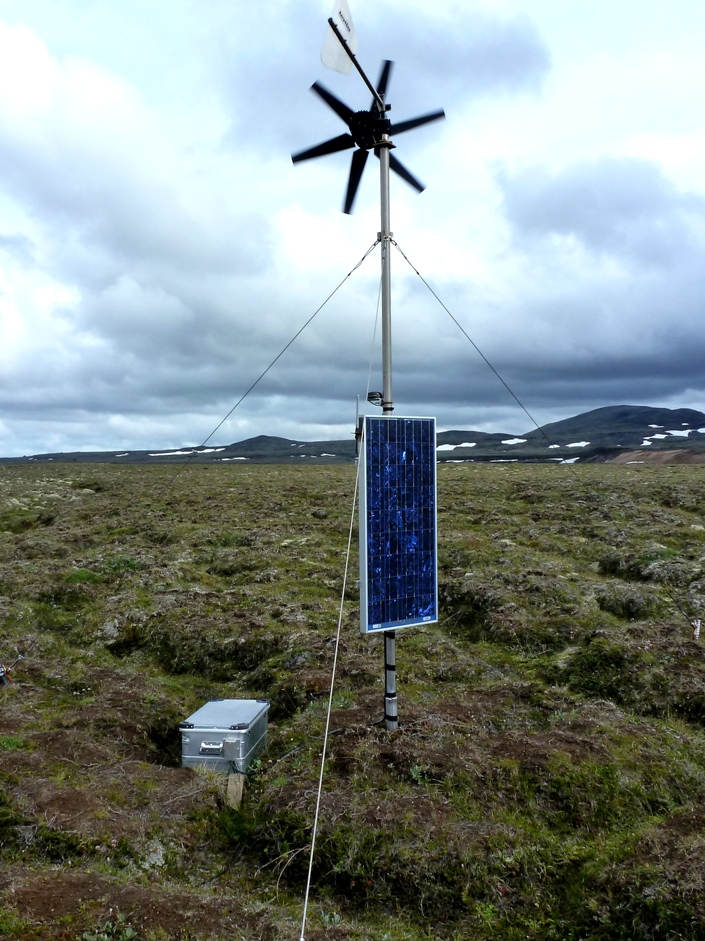
A measuring device in the metal box is placed near volcanoes. It’s powered by wind and sun. It sends information about ground movement to scientists’ computers.
When those large blocks of earth, continental plates, move away from each other, they can crack the earth wide open. We call this action of the geosphere an earthquake. Sometimes it creates a small crack in the ground.
Other times, it can create a very deep and wide crack, creating a valley. In the picture below, I’m inside one of those cracks caused by an earthquake, looking at what the inside of the earth looks like.
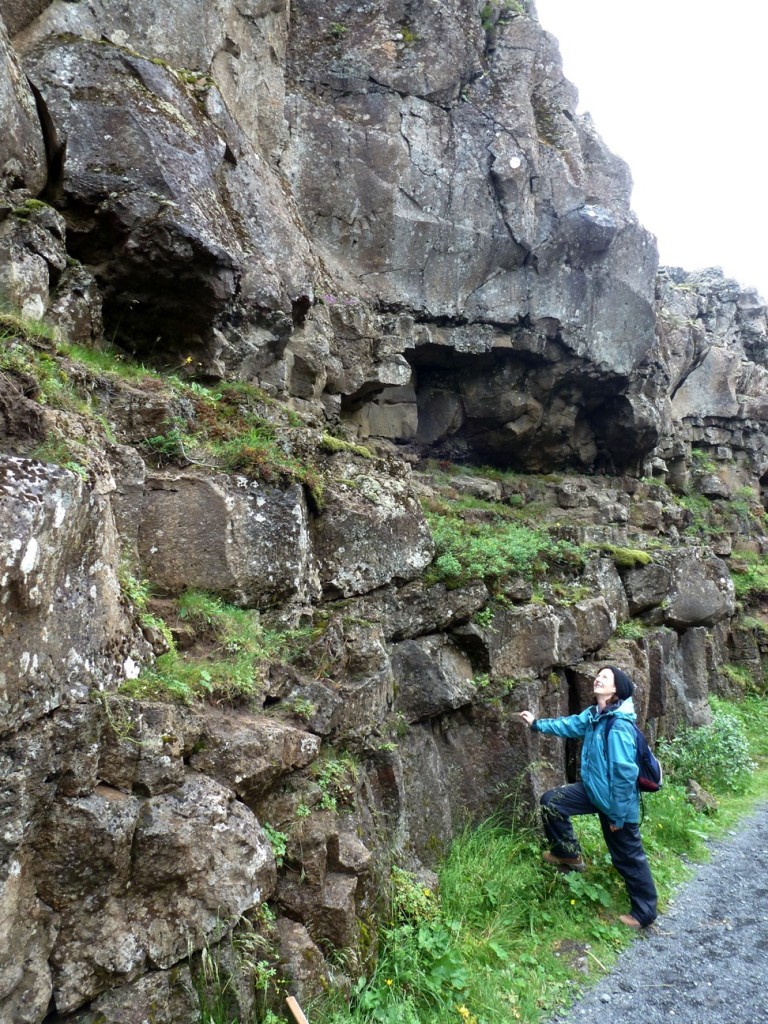
Ms. Christie-Blick inside the earth that has cracked open.
While movement of the geosphere can create beautiful landscapes, it also has an impact on the biosphere. People are often affected by the earth’s movement and changes, not only in Iceland, but in areas around the world, especially near areas where two continental plates meet.
On April 25, 2015, a strong earthquake was felt in Nepal, a country north of India. It broke apart buildings and roads. It started an avalanche on Mount Everest. This has had tragic consequences for thousands of people. Over 2000 people have died.

Buildings crumbled during the earthquake in Nepal, destroying property and lives.
The Bardarbunga volcano recently erupted in Iceland. The eruption went on for several months! Lava poured down its sides creating more land, and changing the landscape around it. Any human-made buildings or roads quickly got swallowed up by the lava.
As with Iceland, the Hawaiian Islands were created by volcanoes, and they continue to erupt.
The geosphere is active indeed, constantly changing the shape of the land and the lives of the people who live nearby.




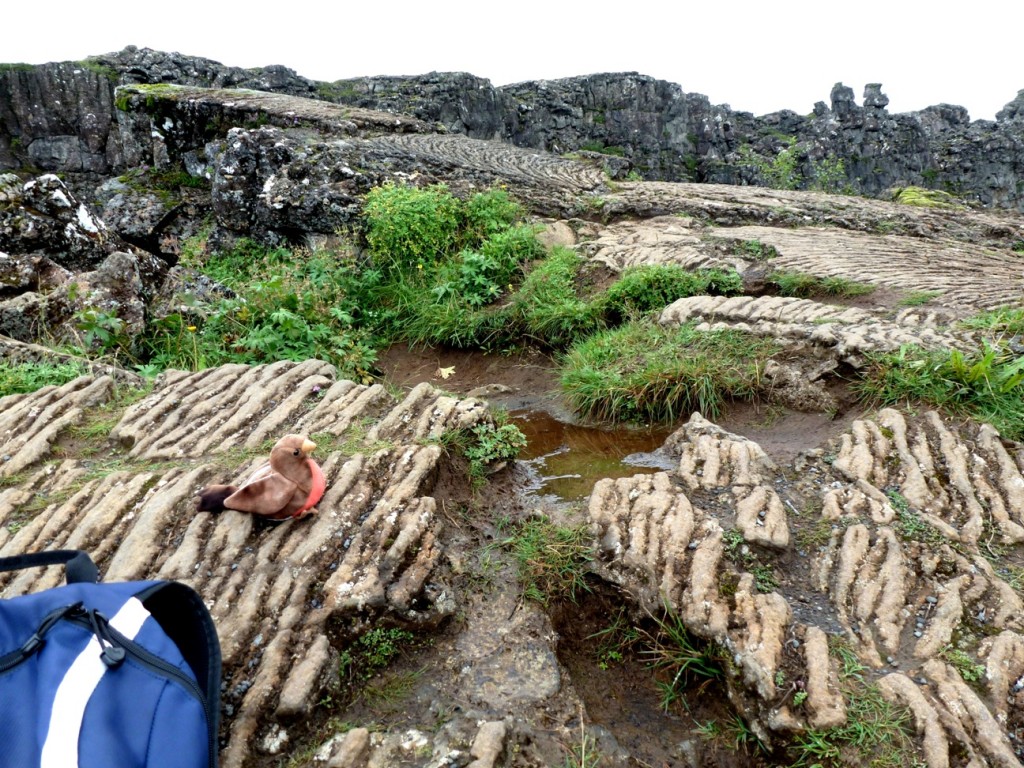
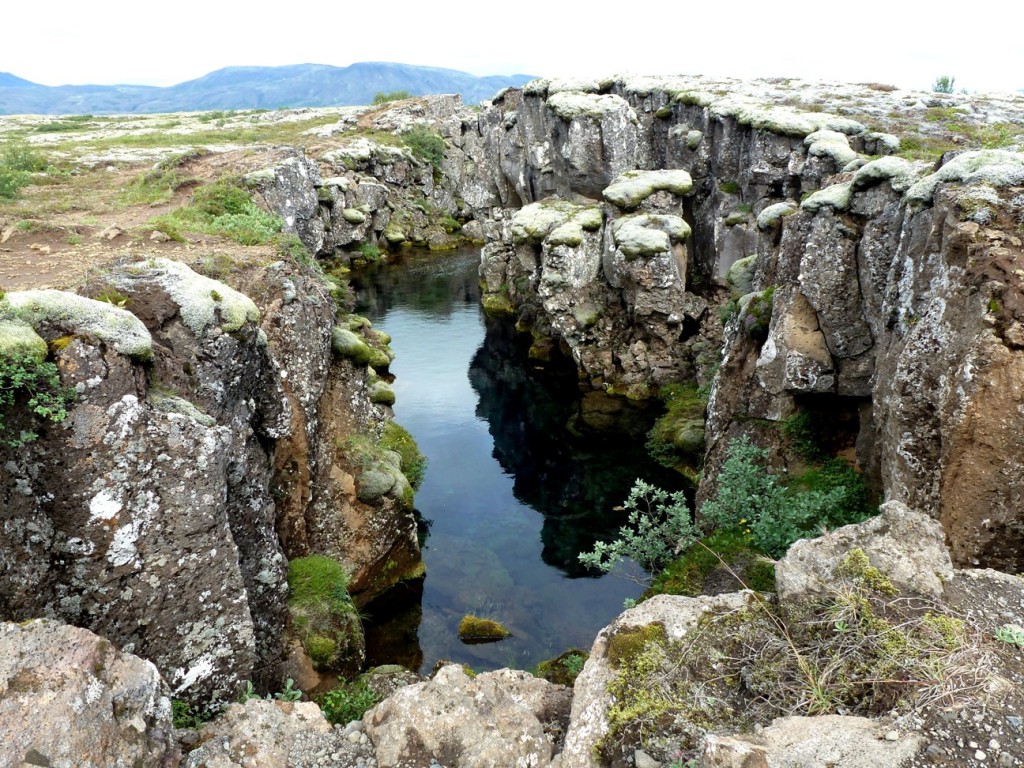
I did not know that scientists who study volcanoes used tools to record if volcanoes were coming. But know I know that they use a device which they put in a metal box. This makes me want to learn more about volcanoes!
I can´t believe that earth quake video! Some people jumped out of buildings!
I never knew there could be so many volcanos in one area
I had no idea about the earthquake in Napal.I feel bad about what. When I take vacations I’m going to make sure where it is. I am very happy knowing we live where there are not many earthquakes here. I’m also happy to know that we have machines that can detect earthquakes.
Something I learned is that you can get inside the open volcano, I thought it is off limits.
This told me that things can fill up with water realy fast
I did not know one earthquake could be so big.
I did not know that magma can brake through the land. Now i know to be careful in iceland.
That was cool how the bardarbunga volcano created more land when lava falled downed the sides
I never knew a volcano could go on for that long. Now I know that volcanoes can go on for many months.
I never thought that the volcano monitor looked like a metal box and was powered by sunlight energy
i did not know that earthquakes could be that bad. That is very dangerous.
I never knew that there was a spot in Iceland that people threw coins in to a crack in the earth to make a wish.
i didn’t know that there was a earthquake in Nepal that killed over 1000 people.
I did not know that the Babadunga volcano made the lava flow so far away. I thought that it would just flow few feet away.
I didn’t know that there was a huge earthquake that killed more than 1,000 people.
I did not know that geisers can be so hot.
I didn’t know about how you can go in a volcano when it is not erupting.Is it still hot down in the volcano? How long does a lava stream go up to?
I had no idea that engineers and scientists work together to make monitors to sense when the earth is moving, so they can know when the earth is moving. This sound s like it would really help the people that live close to the edges of the tectonic plates
I learned that you can go in a volcano when it is not erupting.Is it slill hot in the volcano?How far can a stream of lava go up to?
I thought that it was so cool how lava can make more land and also how volcano’s can destroy entire city’s.
I did not know that there was a earthquake in Nepal that killed over 1000 people.